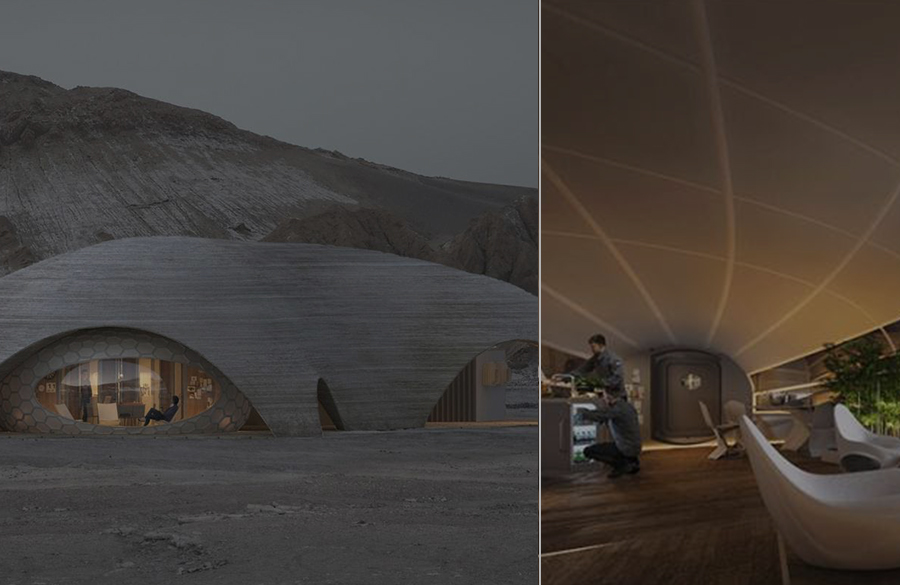The human exploration of Mars for Mars Habitat has been a long-standing aspiration that has recently taken shape in the form of some action plans made by the government as well as some private players such as SpaceX headed by Elon Musk.

The world of science and technology has taken several strides in exploring planet Mars ever since the later part of the 20th Century. These inquiries have yielded increased education about the Martian system primarily focusing on its geology and its potential for habitation. The human exploration of Mars has been a long-standing aspiration that has recently taken shape in the form of some action plans made by the government as well as some private players such as SpaceX headed by Elon Musk.
Most recently, NASA launched a competition to explore the possibilities of design for a human habitat on Mars from experts outside the aerospace industry to be designed using 3D printing technologies. This is the first time that they have actively looked for specialized inputs from outside. The winning entry of the competition for Mars Habitat by international architectural firm HASSEL and ECO Engineers led by Eckersley O’Callaghan creates a solution that extends every pre-existing notion of design in extra-terrestrial conditions.
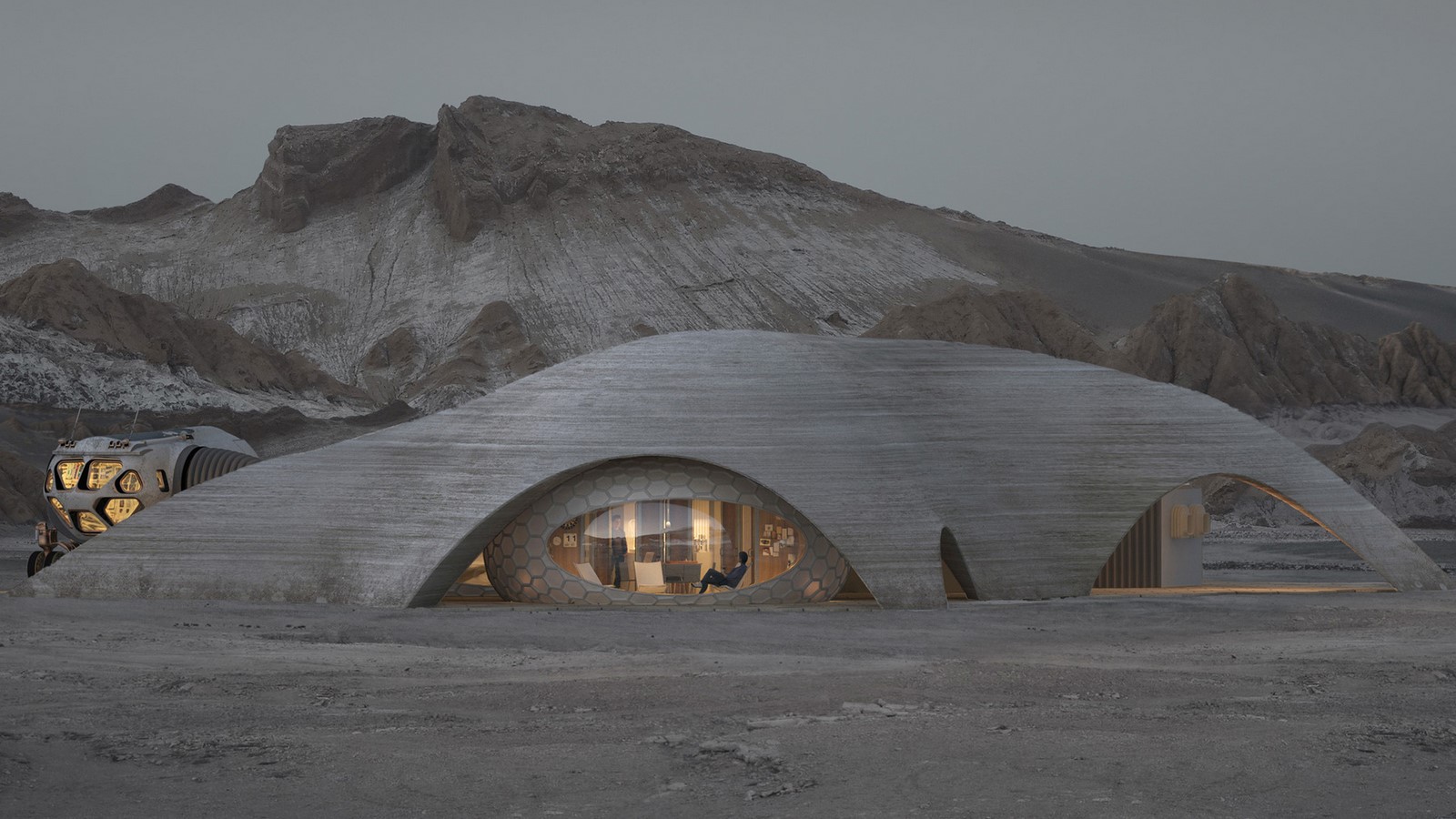

1. Design of Mars Habitat
The architects aimed at stretching the scope for a design of Mars Habitat that goes beyond the technical and looks at achieving a sustainable durable habitable human shelter. This in itself is a first. The earlier precedents have solely focused on basic survival and safety. The architects, in this case, wanted to bring a human element to the space design. This outlook changes the perspective and creates a brief with more room for exploration with design, materiality, and performance. The habitat had to combat two major issues – one being the unconducive atmosphere on the planet with no magnetic field and the second being the material and construction.
The architects realized that they would need an outer shell structure that would protect the interior habitable space from radiation and micrometeorite strikes and dust clouds. This shell of Mars Habitat was designed parametrically to get a form that would provide maximum protection and require optimum material and time for construction. The shell would be built by robots that would arrive on the planet years or months before the astronauts to create the shell structure. The shell would then create a safe space inside where the astronauts could set up their habitat. This was designed considering ease of construction, maximum efficiency, and durability. A series of inflatable pods were created that could be set up in no time and could provide spacious rooms inside. The design accommodates a state of the art mechanism wherein the astronauts could comfortably accommodate all living and working requirements for everyday life on Mars.
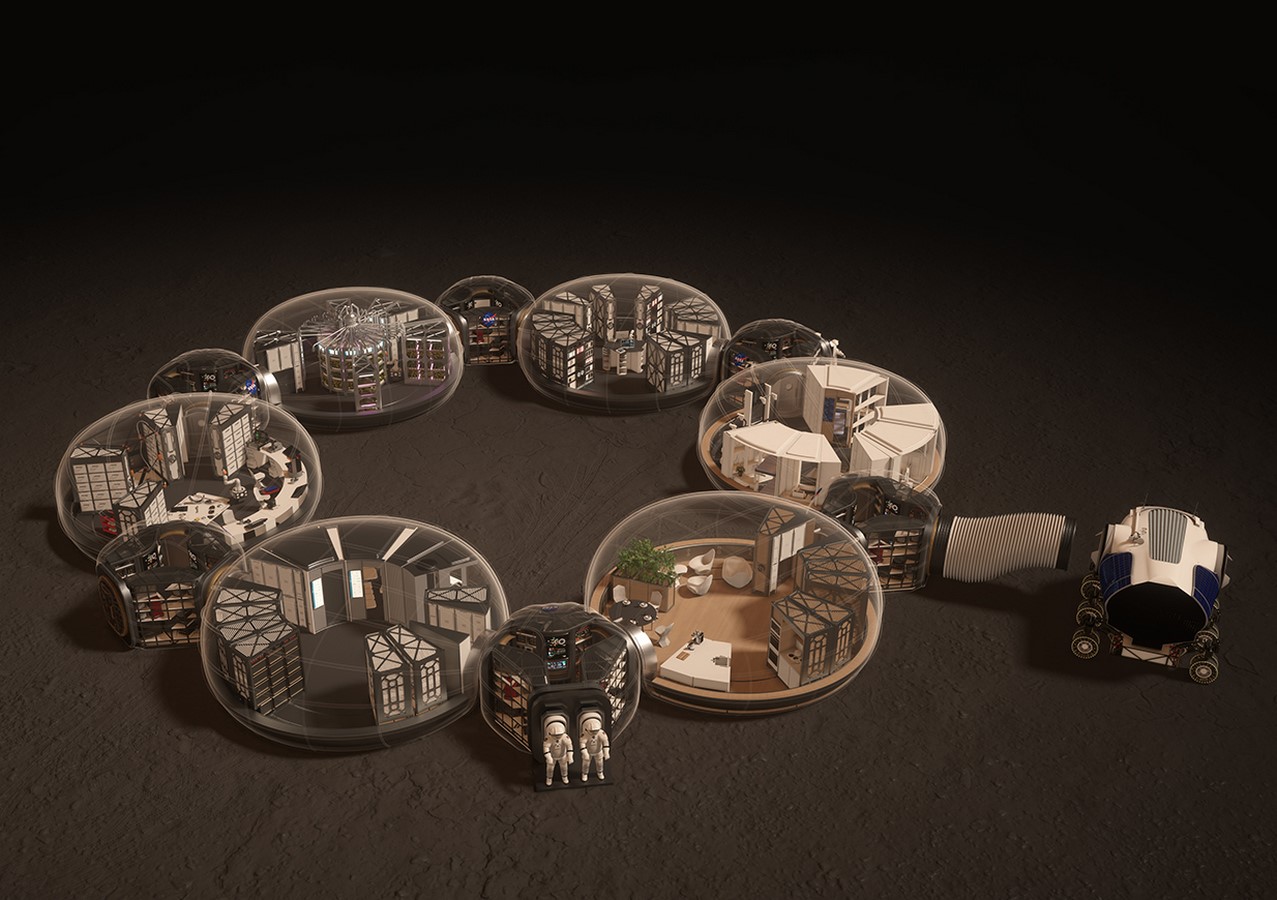
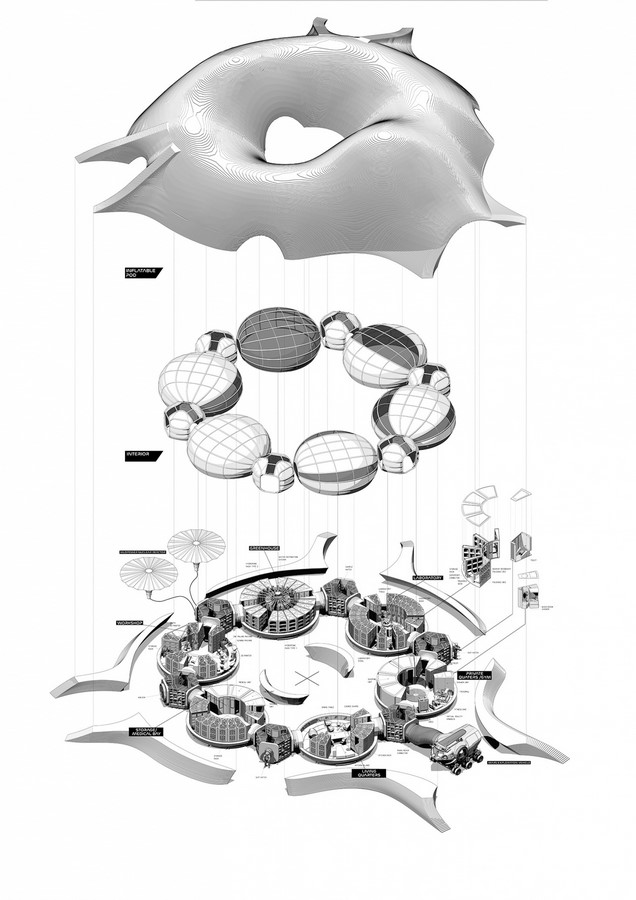
2. Materials / Construction of Mars Habitat
The most crucial element required in the building of the shell of Mars Habitat was finding a material that would survive and protect the habitat from the harsh radiation and the meteorite strikes. The architects have devised to procure this material from the planet itself as it would naturally be able to survive the prevalent conditions. The planet’s regolith (the loose material of stones and dust on the surface of Mars) will, therefore, be used to build the outer shell structure.
The shell of Mars Habitat will be built by robots that will arrive months before the astronauts to scout the surface, find a suitable location, excavate, and build the shell. These robots will have interchangeable roles, including battery storage, scouting, logistics, excavation, and 3D printing, all integrated with multiple cameras and sensors for navigation. Once the shell is complete, the astronauts will arrive fully prepared having observed the site through the robots. The astronauts will then set up the internal space by using inflatable pods.

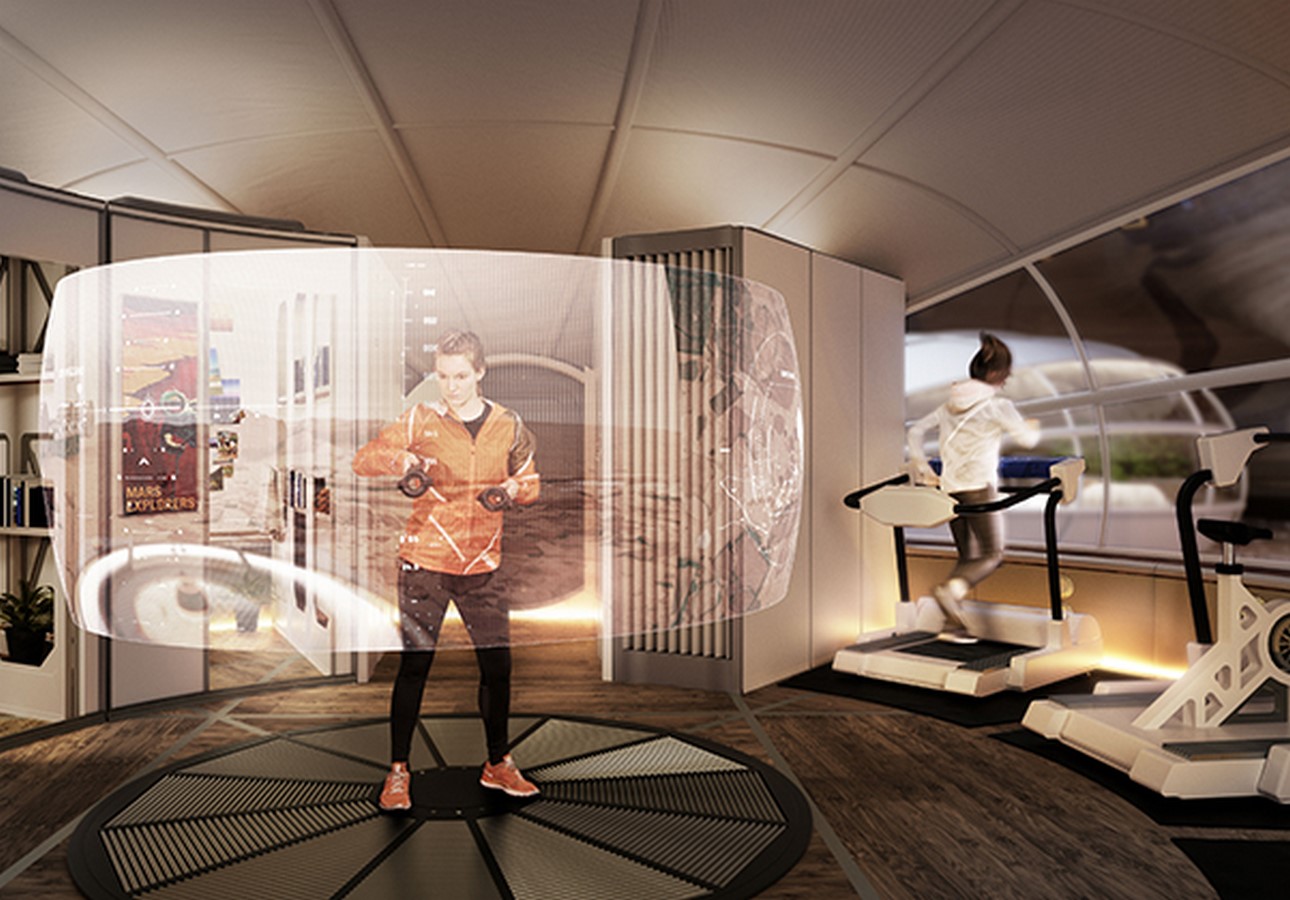
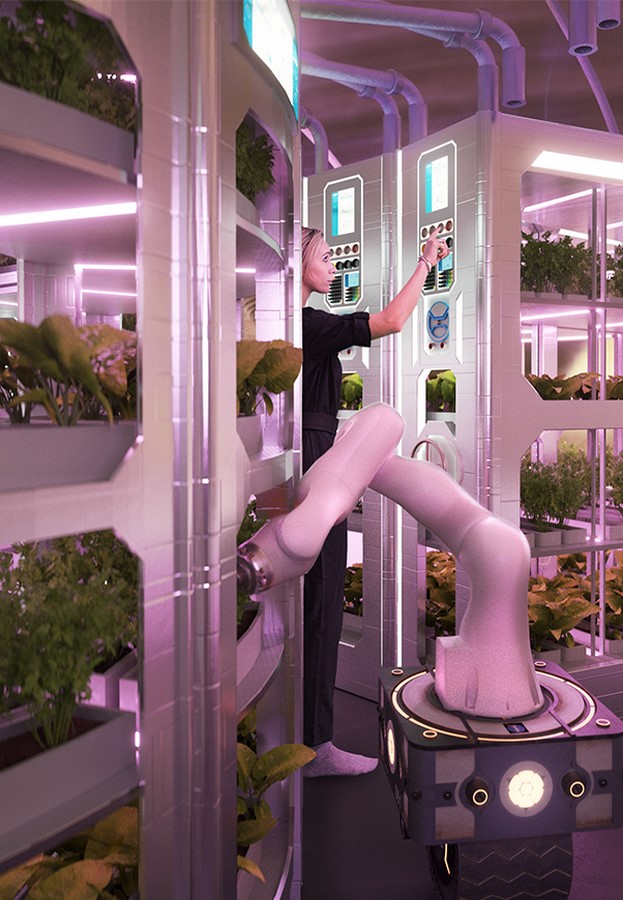
3. Sustainability
The design of Mars Habitat makes use of existing natural materials on-site and uses technology to derive the best configuration of form that could be suitable for the specific harsh conditions on Mars. This innovation in approach, technique, and design accommodates the idea of a sustainable durable solution of space design, something that has until yet remained unexplored. This enables increasing the possible period of habitation significantly. In accounting for a human element in the design, the architects and engineers have created pre-engineered solutions that extend the idea of outer space explorations from being very technical to be more habitable and durable. The aspect of sustainability is thereby embedded in every design decision of the project.
This Mars Habitat project exemplifies the scope of architecture in creating a state of the art solution even in the most unpredictable and hostile conditions. The use of technology as not just a tool for representation of the design in tangible form but as a medium of design thinking and generating responses for site-specific conditions has certainly pushed the bar for architectural design. This project certainly serves as an inspiration for the extent of possibilities in design in the present-day context.


